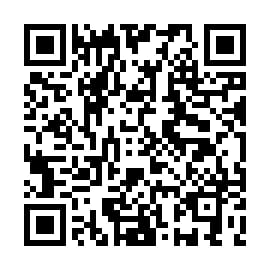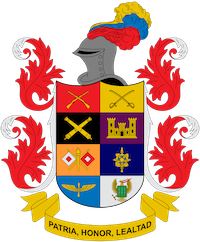Cyberwar Strategies: Israel and Russia
Abstract
War is not a static phenomenon, it changes, evolves, adapts to new realities; we live in a world with enormous dependence on information and telecommunication technologies, new actors emerge and threaten the security of States making use of the same tools that we use every day, hackers have become something that worries the governments of the world, they have a level of knowledge that can endanger critical infrastructures of countries, but what happens when not only should we worry about the actions perpetrated in cyberspace by isolated individuals? But what happens when we must also worry about other states with large sources of economic resources, which decide to professionalize themselves to make warlike use of electronic and programming tools; this is the world in which we are immersed today, the new scenario of war and those who best exemplify this reality are Russia and Israel.
Downloads
References
Anónimo. (2010). La guerra de Osetia del sur. Recuperado de: http://www.mundohistoria.org/temas_foro/historia-desde-la-guerra-fria-hasta-la-ultima-decada/la-guerra-osetia-del-sur.
Arun, N. (2012). No hay tregua en la ciberguerra. Recuperado de: http://news.bbc.co.uk/hi/spanish/science/newsid_7560000/7560462.stm.
Criado, M. Á. (2010). “Un Código de software es un arma, igual que un misil”. Recuperado de: http://www.publico.es/ciencias/302347/un-codigo-de-software-es-un-arma-igual-que-un-misil.
Euronews. (2011). Rusia: Ciberataques contra medios digitales de la oposición. Recuperado de: http://es.euronews.com/2011/12/04/rusia-ciberataques-contra-medios-digitales-de-la-oposicion.
Euronews. (2012). El virus Flame abre nueva etapa en la ciberguerra. Recuperado de: http://es.euronews.com/2012/05/29/el-virus-flame-abre-nueva-etapa-en-la-ciberguerra/.
Greenberg, A. (2012). New Research Shows Flame Malware Was Almost Certainly A U.S. Or Israeli Creation. Recuperado de: http://www.forbes.com/sites/andygreenberg/2012/06/11/new-research-shows-flame-malware-was-almost-certainly-a-u-s-or-israeli-creation/.
Hosenball, M. (2012). EEUU e Israel desarrollaron virus Flame contra Irán: reporte. Recuperado de: http://lta.reuters.com/article/internetNews/idLTASIE85J00M20120620.
Langner, R. (2011). Cracking Stuxnet, a 21st-century cyber weapon. Recuperado de: http://www.ted.com/talks/lang/en/ralph_langner_cracking_stuxnet_a_21st_century_cyberweapon.html.
Markoff, J. (2008). Before the Gunfire, Cyberattacks. Recuperado de: http://www.nytimes.com/2008/08/13/technology/13cyber.html?_r=2&oref=slogin.
Maulini, M. (s.f.). ¿Qué es un ataque de DDoS? Recuperado de: http://www.e-securing.com/novedad.aspx?id=57.
Meshcheriakov, V. (2012). Rusia crea una estrategia de ciberguerra. Recuperado de: http://rusiahoy.com/articles/2012/03/21/rusia_crea_una_estrategia_de_ciberguerra_16580.html.
Ministerio de Defensa Nacional. (2009). Ciberseguridad y ciberdefensa: una primera aproximación. Recuperado de: http://www.mindefensa.gov.co/irj/go/km/docs/Mindefensa/Documentos/descargas/estudios%20sectoriales/Notas%20de%20Investigacion/Ciberseguridad%20y%20ciberdefensa.pdf.
Reuters. (2011). Israel lanza cibercomando contra ataques informáticos. Recuperado de: http://noticias.terra.com.co/internacional/medio-oriente/israel-lanza-cibercomando-contra-ataques-informaticos,5efff8e9e7300310VgnVCM20000099f154d0RCRD.html.
Reuters. (2012). Irán detecta “ciberataque masivo”: TV. Recuperado de: http://lta.reuters.com/article/internetNews/idLTASIE85K0ED20120621?pageNumber=1&virtualBrandChannel=0.
Reuters. (2012). Virus Flame, nueva arma cibernética. Recuperado de: http://www.elcolombiano.com/BancoConocimiento/I/infografia_virus_flame_nueva_arma_cibernetica/infografia_virus_flame_nueva_arma_cibernetica.asp.
Russia Today. (2012). Los científicos advierten: una ciberguerra global sería igual que una atómica. Recuperado de: http://actualidad.rt.com/actualidad/view/47036-Los-cient%C3%ADficos-advierten-una-ciberguerra-global-ser%C3%ADa-igual-que-una-at%C3%B3mica.
Soriano, J. (s.f.). El Arte de la Guerra y sus cibercomandos. Recuperado de: http://www.realnet.com.mx/index.php/capacitacion/noticias/tendencias/el-mundo-ti-en-numeros/articulos/241-el-arte-de-la-guerra-y-sus-cibercomandos.html.













